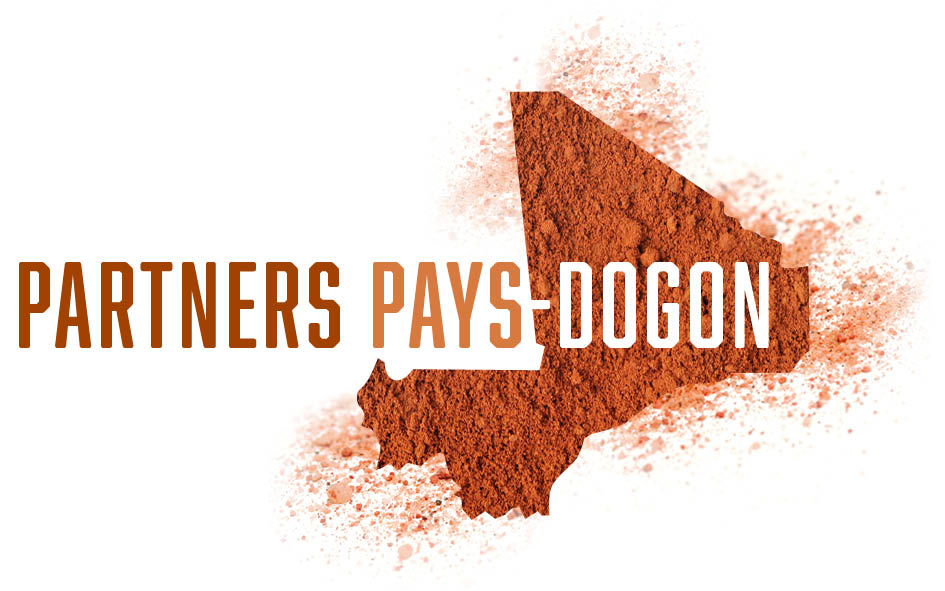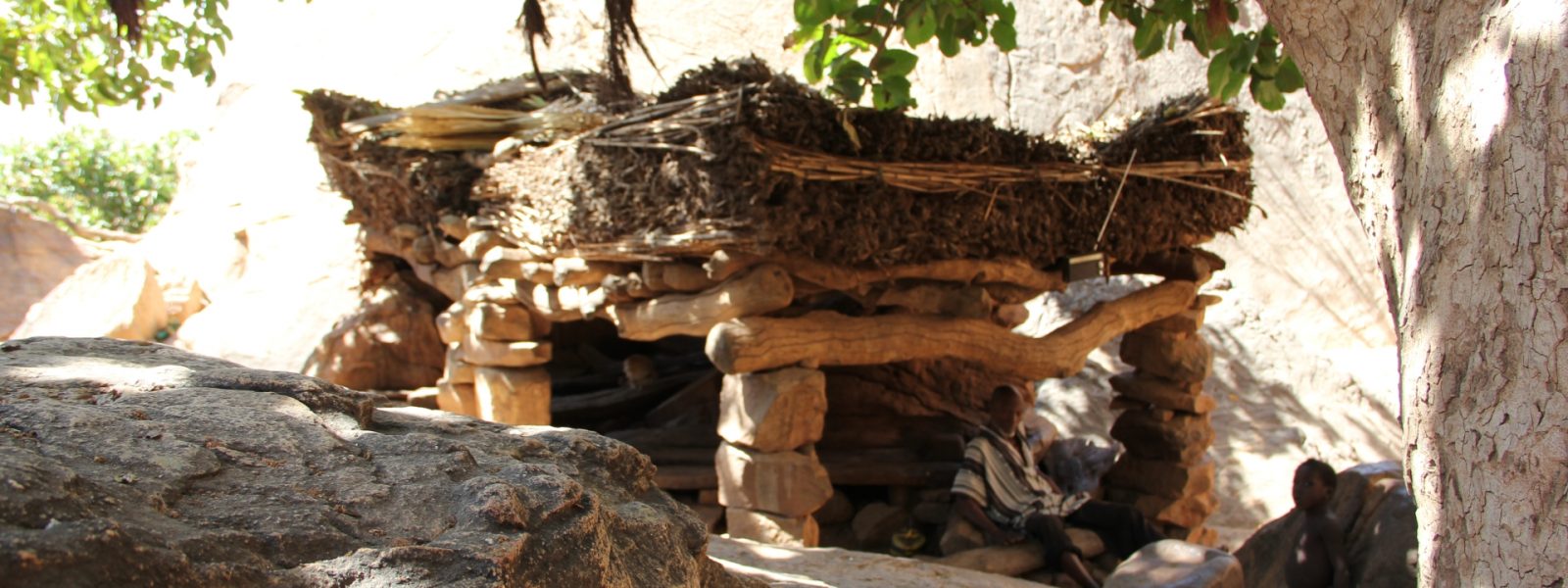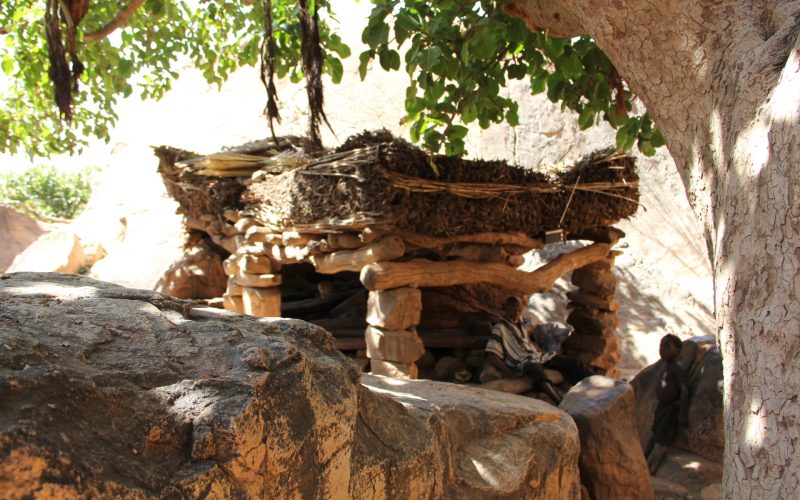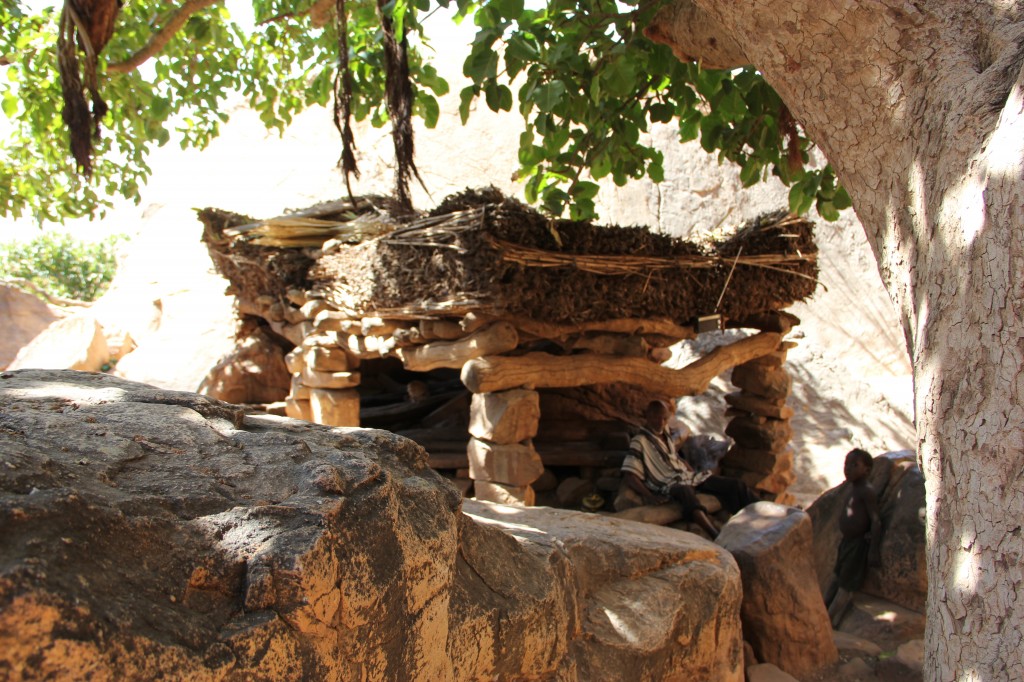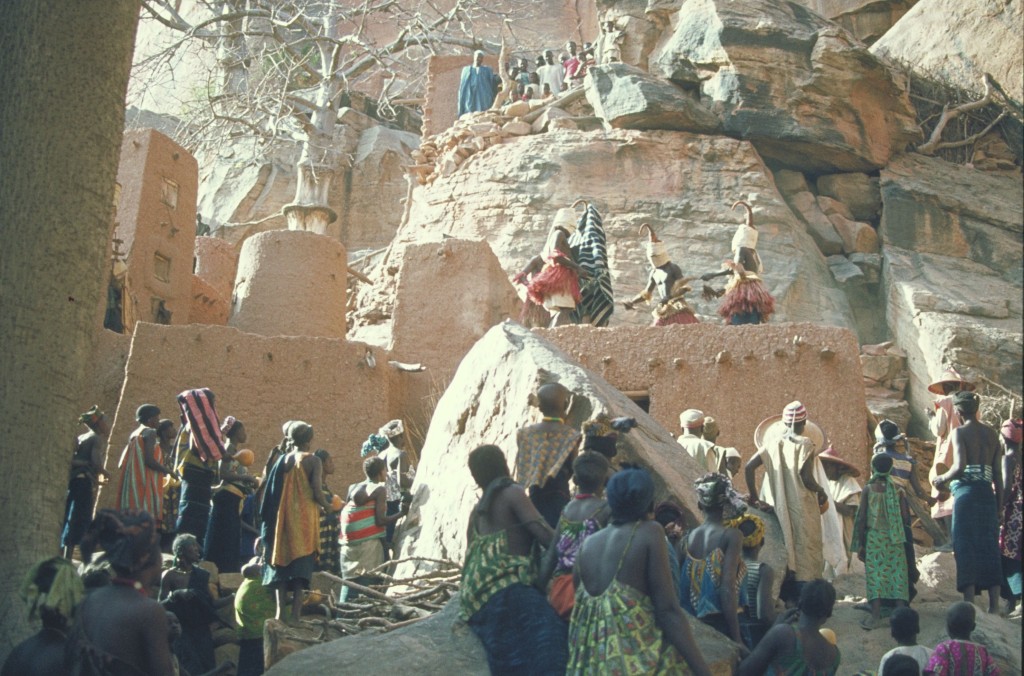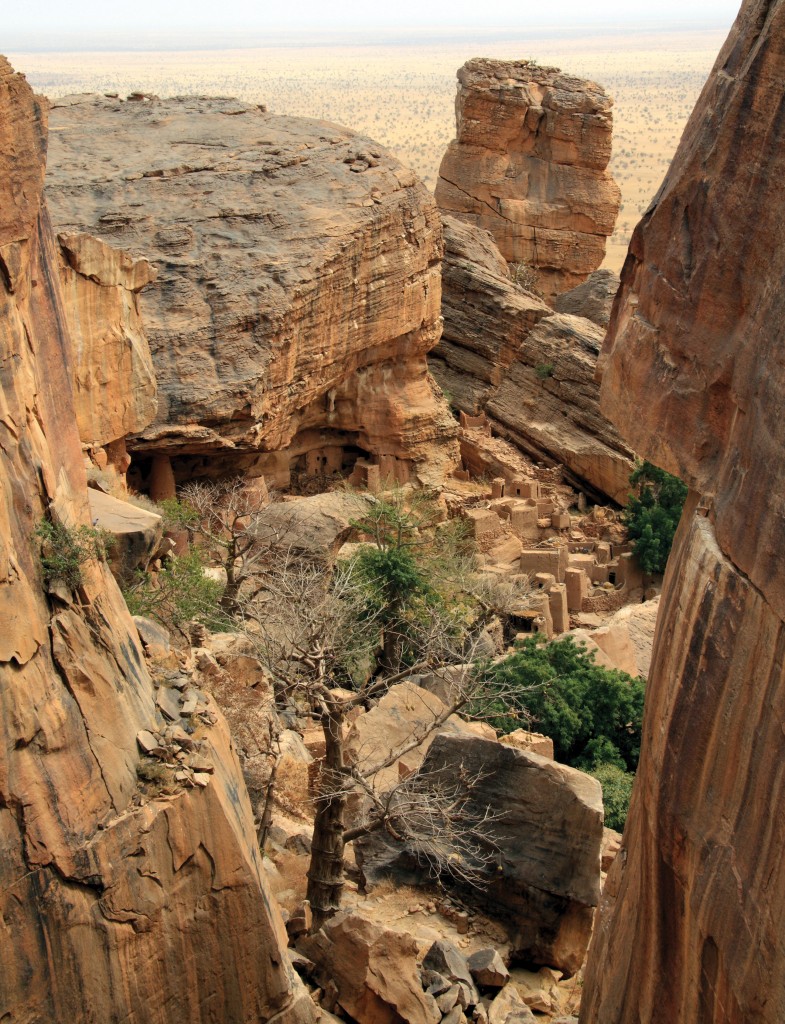The patronymic surname of Yougo Dogorou’s inhabitants is Doumbo which means “rock”. The elderly say this name refers to Bamba, a region where they stayed temporarily before moving to and settling down on the isolated mountain of Yougo. In “Les âmes des Dogons “, G. Dieterlen does not mention any Doumbo migration via Bamba. But in “Les Devises des Dogons “, S. de Ganay states that the Tige of Bamba is “ Bamba dumboo dumbo “ meaning “ rock, the rock of Bamba “. Yougo Dogorou is unique. It is perched next to the top of an isolated mountain separated from the cliff. A gigantic rock, called “the anvil”, rises next to the village. Open caves sheltering Tellem and Dogon constructions overhang the village. In ancient times the inaccessibility of the site protected Yougo Dogorou against the outside world. Today its isolation has the opposite effect. Most of the adult population moved to the villages of the Seno-Gondo plains where working conditions are far easier. The village is inhabited by a few families and some elderly people who are the guardians of the local altars. On certain occasions family members and relatives will visit the village. On the death of an elderly parent, they will gather in numbers and participate in funerary rituals and dances. The face of the cliff to the West of the village is strewn with open caves containing constructions left by the Tellem. The first Dogon migrants from the Arou tribe took up residence at the foot of this cliff. Traces of their passage are still visible. Old foundations can still be discerned and millstones lay around. There are no paths leading to this place. One has to make a way around and over huge boulders. initial place of settlement initial place of settlement initial place of settlement As regards traditional belief, two localities in Dogon country are of crucial importance. In both cases the Arou tribe assumes supreme authority Arou is the place of residence of the Hogon whose religious authority spans the whole land. As a priest of agrarian rites, he represents the Earth, fertility and life. He is to ensure the perpetuation of his people. As regards Yougo Dogorou, this is where commences the Sigui, the ritual that commemorates the first ancestor who died in the form of a serpent.
The ritual takes place once every 60 years and symbolizes the renewal of generations. It is also in this village that the sacred cave of Albarga is located, the old man of the myth who was discovered by Yayeme, the lady who confiscated the masks from the Andoumboulou. People come from afar to make sacrifices for protection against sorcery. Also, in case of serious problems having to do with masks, the village elderly will be consulted by visitors and matters will be discussed in the Togu Na bordering the central village square. Marcel Griaule mentions in “Masques Dogons “ the existence at Yougo Dogorou of Albarga’s walking cane which is used in rites for rain making. Today this rite is still of actuality. Villages in the region that suffer from severe drought may call for this cane to intervene and block the evildoers who are responsible for the lack of rain. Once every three years, a delegation from Yougo Na, Yougo Dogorou and Yougo Piri will visit those villages that asked for help. By means of the cane the culprit will be ritually uncovered and he will die within the three years that follow. So Still the village that is very difficult to live in will never be abandoned because of this special role in the Dogon land. Today the young people of the village lives in the plain and take care of the harvest while their wife’s and the young kids life upon the village to take care of the elderly. the houses and de society of masks that means so much for the whole Dogon area.
